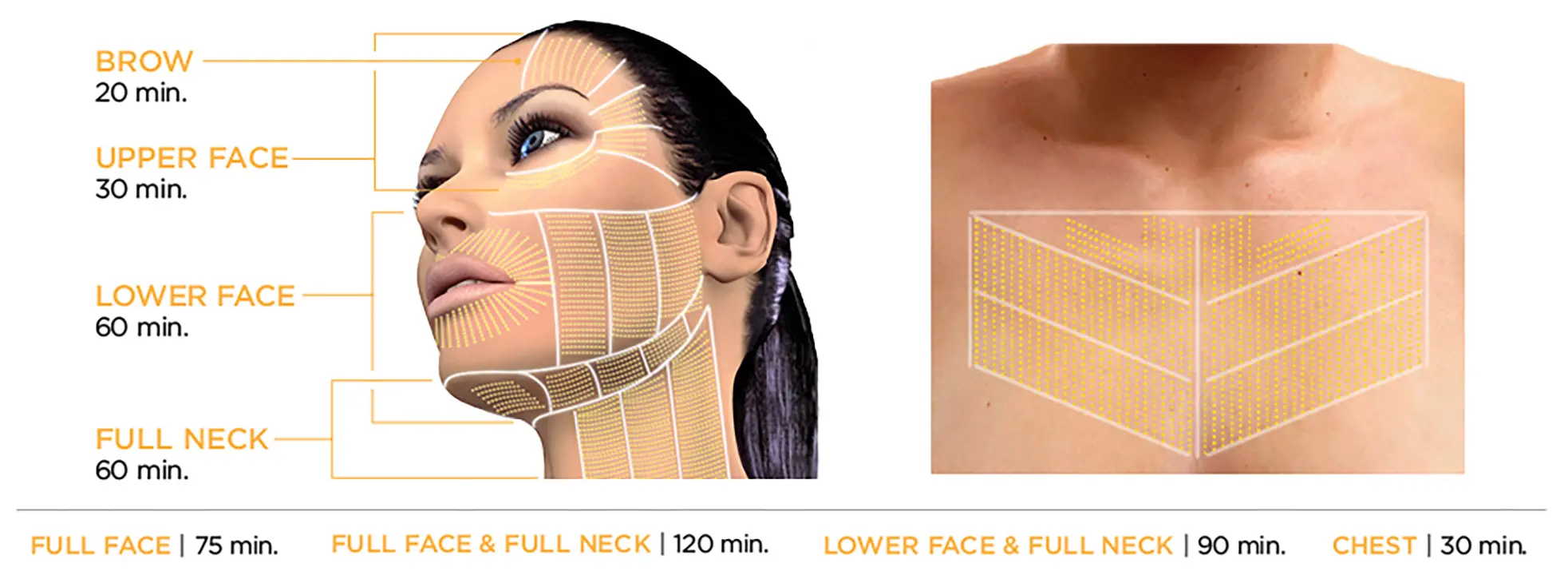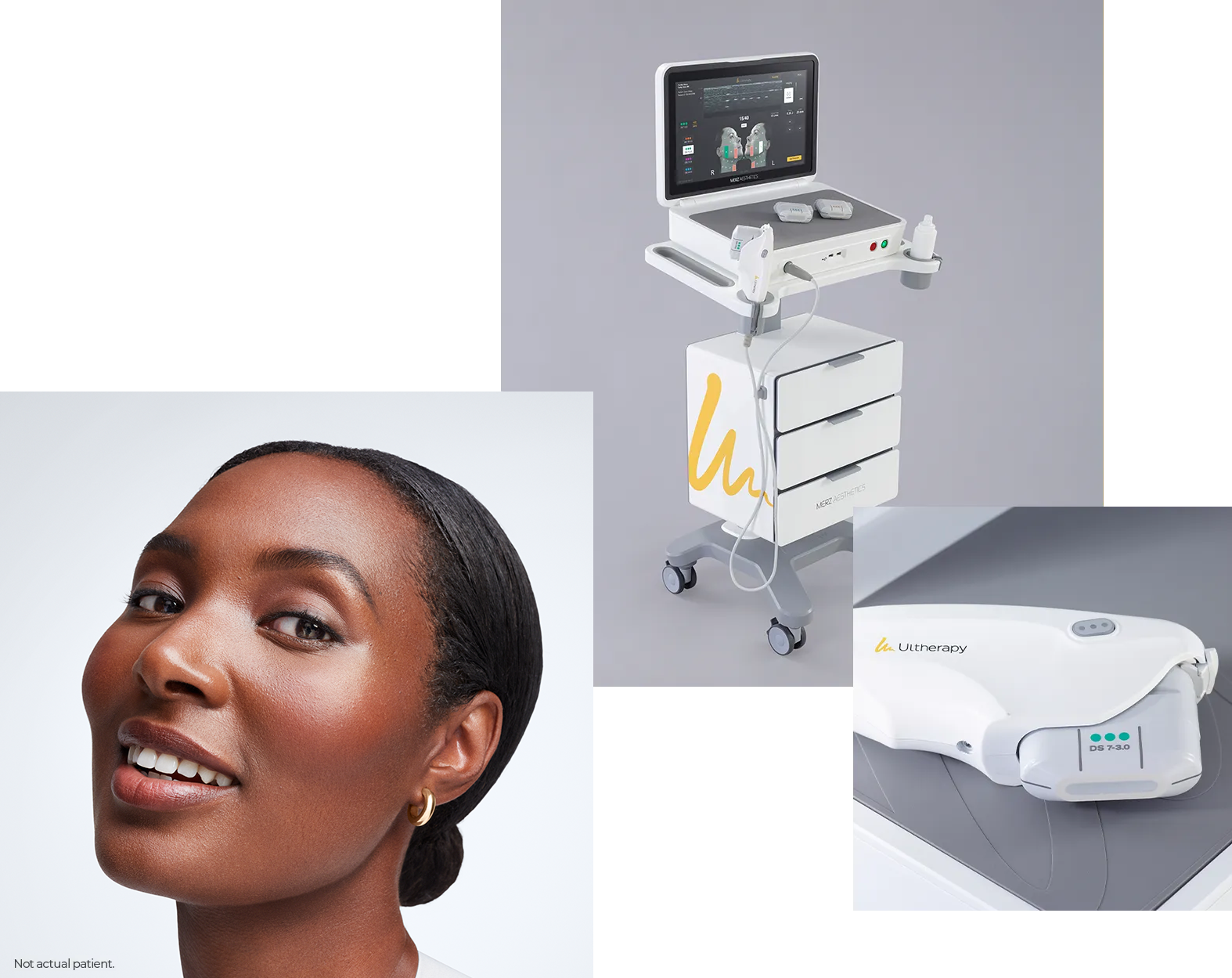All You Need to Understand About Density RF Malaysia Before Treatment
Wiki Article
Why Ultherapy Could Be Clinically Needed: Checking Out the Reasons for a Non Surgical Lift
Ultherapy is getting attention as a sensible option for people encountering skin laxity as a result of aging or specific medical problems. This non-surgical treatment boosts collagen production, supplying a solution that stays clear of the recuperation time linked with intrusive treatments. As people seek to improve not just their appearance but additionally their total skin health and wellness, recognizing the scenarios that require Ultherapy's use becomes essential. What aspects add to its clinical necessity?Comprehending Ultherapy: What It Is and Just how It Works
Ultherapy, a non-invasive cosmetic procedure, makes use of ultrasound modern technology to promote collagen manufacturing and advertise skin tightening. By supplying concentrated ultrasound energy deep right into the skin, it targets the fundamental layers usually addressed in surgical facelifts. This process encourages the body's natural healing action, causing steady training and firm of the skin gradually.
Treatment sessions typically last between 30 to 90 mins, depending upon the dimension of the area being dealt with. While outcomes might not be instantly visible, optimal results normally appear within 2 to three months as collagen continues to develop. Ultherapy offers a compelling non-surgical alternative for people looking for skin rejuvenation without the demand for invasive treatments.
The Aging Refine: Results on Skin Flexibility and Collagen
Aging undoubtedly brings changes that reduce skin elasticity and collagen production, bring about visible indicators of sagging and wrinkles. As individuals age, the skin's capacity to retain dampness declines, leading to a drier and less resistant surface. Collagen, a necessary protein accountable for skin framework, also diminishes, triggering the skin to shed its suppleness and youthful look. Factors such as sun direct exposure, ecological pollutants, and lifestyle options better increase this decrease in skin high quality.This loss of elasticity and collagen produces a cascade of adjustments, including the formation of dewlaps, deepening nasolabial folds up, and a total drooping look. The skin's support group compromises, making it a lot more susceptible to the results of gravity. Consequently, several people seek treatments like Ultherapy to fight these aging effects, intending to restore a much more youthful, taut appearance without the requirement for invasive procedures.
Medical Problems That May Gain From Ultherapy
Ultherapy is significantly identified for its potential advantages in dealing with different clinical problems. People experiencing skin laxity, those in post-surgical healing, and people with chronic skin disease might discover this non-invasive therapy useful. By promoting collagen production, Ultherapy can boost skin suppleness and enhance overall appearance for these teams.
Skin Laxity Issues
Skin laxity can be a significant issue for individuals experiencing numerous clinical conditions that affect the honesty and flexibility of their skin. Problems such as Ehlers-Danlos syndrome, which disrupts collagen production, can lead to early skin aging and drooping. Additionally, people with autoimmune problems might experience skin modifications that contribute to laxity. Hormonal changes, specifically during menopause, also contribute in reducing skin firmness. Ultherapy, using ultrasound technology, targets the much deeper layers of skin, stimulating collagen manufacturing and tightening the impacted areas. This non-invasive treatment might provide a sensible option for those looking for to resolve skin laxity arising from these medical conditions, enhancing both look and self-confidence without the need for medical treatment.Post-Surgical Healing Aid
Post-surgical recuperation can often existing difficulties, especially for people experiencing skin laxity because of surgical interventions. Ultherapy offers as a potential help in this circumstance, using ultrasound technology to stimulate collagen manufacturing and improve skin rigidity without intrusive procedures. Patients that have actually undergone surgical procedures such as facelifts, liposuction, or various other body contouring procedures may locate that Ultherapy boosts their healing by dealing with unequal texture and laxity that can occur post-operation. This non-surgical technique can cause improved aesthetic results, potentially decreasing the need for extra surgical treatments. Additionally, it might help minimize discomfort connected with the healing procedure, offering individuals a much more comprehensive healing experience. Ultherapy can be a valuable alternative in post-surgical treatment.Chronic Skin Problem
For people dealing with chronic skin disease such as acne scars, rosacea, or laxity as a result of aging, non-invasive treatments may supply considerable relief and enhancement. Ultherapy has actually emerged as a promising alternative, making use of ultrasound technology to stimulate collagen production deep within the skin. This process can improve skin appearance and elasticity, attending to concerns like irregular skin tone and sagging. Particularly, those with rosacea might experience lowered soreness and swelling, while people with acne scars can gain from boosted skin smoothness and overall appearance. Notably, Ultherapy supplies a non-surgical alternative that decreases recuperation time and dangers associated with intrusive procedures, making it an enticing choice for individuals seeking efficient monitoring of chronic skin problem.Emotional Effect of Sagging Skin and Visual Concerns
The emotional toll of aging commonly materializes in the kind of sagging skin, which can greatly impact a person's self-esteem and overall psychological wellness. Many individuals link vibrant looks with power and attractiveness, causing sensations of insufficiency when confronted with visible indicators of aging. This viewed decline in appeal can cause social anxiousness, withdrawal from social communications, and a raised preoccupation with one's look.Individuals may feel obliged to look for visual therapies to battle these problems, as the need to maintain a youthful appearance can become intertwined with personal identification. The emotional results of drooping skin might additionally bring about clinical depression or a lessened top quality of life. Non-surgical choices like Ultherapy arise as potential options, aiming not only to renew the skin however additionally to restore self-confidence and a favorable self-image, ultimately resolving the deeper psychological ramifications of aging.
Comparing Ultherapy to Traditional Surgical Options
When comparing Ultherapy to traditional medical options, substantial differences arise in both cost-effectiveness and recovery time. Ultherapy offers a non-invasive method that typically results in reduced costs and minimal downtime for people. In contrast, surgical lifts commonly need more monetary investment and an extended recovery period.Cost-Effectiveness of Ultherapy

Although typical medical lifts often come with significant upfront expenses and prolonged healing times, Ultherapy provides a compelling option that can provide similar results at a fraction of the price. The ordinary price of a medical renovation can vary from $7,000 to $15,000, while Ultherapy treatments normally fall between $2,000 and $4,500, depending upon the location dealt with and service provider experience. Additionally, the lack of considerable pre-operative assessments and post-operative care connected with Ultherapy better adds to its cost-effectiveness. This method not only lessens economic pressure yet also allows clients to purchase other elements of their health and wellness and well-being. By doing this, Ultherapy becomes an economically practical alternative for those seeking face restoration without the worries of traditional surgical treatment.
Healing Time Comparison
Healing time is a considerable element in the decision-making process for those taking into consideration cosmetic procedures. Ultherapy stands out as a non-surgical alternative that commonly needs marginal downtime. A lot of patients can go back to their day-to-day tasks practically immediately, experiencing just light inflammation or swelling Density RF Malaysia that generally fixes within a couple of hours. On the other hand, standard surgical choices, such as renovations, commonly require a prolonged healing duration. People may encounter several weeks of swelling, wounding, and limited activity, with some going back to normal routines using up to 3 months. This stark distinction in recuperation time makes Ultherapy an appealing option for people looking for effective results without the substantial aftercare connected with surgical treatment, enabling a smoother modification back to everyday life.The Long-Term Perks of Non-Invasive Treatments for Skin Health
As people significantly seek alternatives to operations, the long-lasting benefits of non-invasive therapies for skin health end up being more obvious. Therapies such as Ultherapy, chemical peels, and laser therapy deal significant benefits without the requirement for substantial healing times related to surgery. Density RF Malaysia. Over time, these non-invasive choices can advertise collagen manufacturing, bring about stronger skin and an extra younger lookFurthermore, routine non-invasive therapies can enhance skin texture, tone, and flexibility, boosting general skin health and wellness. Clients commonly experience less complications and negative effects, making these treatments more appealing.
The cumulative results of constant treatments can maintain and extend aesthetic improvements, permitting individuals to preserve their preferred appearance with very little downtime. By focusing on non-invasive techniques, individuals can attain enduring results while prioritizing their wellness and wellness. Inevitably, the long-lasting benefits of such strategies highlight their growing appeal in modern skin care.
Frequently Asked Concerns

Exactly how Long Does an Ultherapy Session Usually Take?
An Ultherapy session usually lasts between 30 to 90 minutes, relying on the therapy area. Elements such as the individual's details demands and the extent of the treatment can affect the total duration.
Are There Any Side Impacts Related To Ultherapy?
Ultherapy can cause adverse effects such as short-lived redness, swelling, or tenderness in the treated area - Skin tightening treatment KL. While a lot of people experience marginal pain, it is critical to consult a specialist for customized suggestions and potential responsesHow Quickly Can I See Results After Treatment?
Results from Ultherapy usually start to appear within a couple of months post-treatment. The complete results might proceed to establish over six months as collagen production rises, bring about recognizable training and tightening up of the skin.
Is Ultherapy Suitable for All Skin Types?
Ultherapy is generally ideal for numerous skin types, consisting of lighter and darker tones. Private skin problems and concerns may impact its performance, making assessments with a qualified specialist vital for customized suggestions.How Often Should Ultherapy Treatments Be Duplicated?
Ultherapy treatments are typically advised every 6 to year, depending on specific skin disease and wanted results. Normal evaluations by a certified specialist can aid identify the very best frequency for maintenance and effectiveness.Report this wiki page